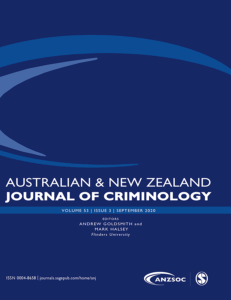Fear of crime examined through diversity of crime, social inequalities, and social capital: An empirical evaluation in Peru
| Year | : | 2020 |
|---|---|---|
| Author/s | : | Wilson Hernández, Lucía Dammert, Lilian Kanashiro |
| Area/s | : | Ethnicity, gender and citizenship |
Hernández, W., Dammert, L. y Kanashiro, L. (2020). Fear of crime examined through diversity of crime, social inequalities, and social capital: an empirical evaluation in Peru. Australian & New Zealand Journal of Criminology, 53(4), 515-535. https://doi.org/10.1177/000486582095
Latin America is a violent region where fear of crime is well spread but still not fully understood. Using multilevel methods for a large and subnational representative household survey, researchers assess the determinants of fear of crime in Peru, the country with the highest fear of crime and crime victimization in the region. Results show that body-aimed victimization (physical or sexual abuse from a member of their household, and sexual offenses) is the strongest driver of fear of crime, even higher than armed victimization. Moreover, safety measures based on social capital are negatively related to fear of crime, suggesting that they are palliatives rather than real protections. Finally, the study shows that people in a higher socioeconomic status are more likely to fear more because they have more (resources) to lose. Policy implications address Latin America as a whole and punitive policies against crime are common in the region, while evidence-based decisions are scarce.







